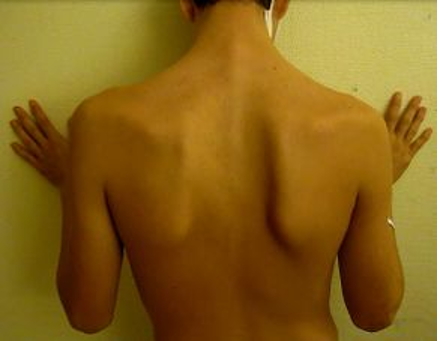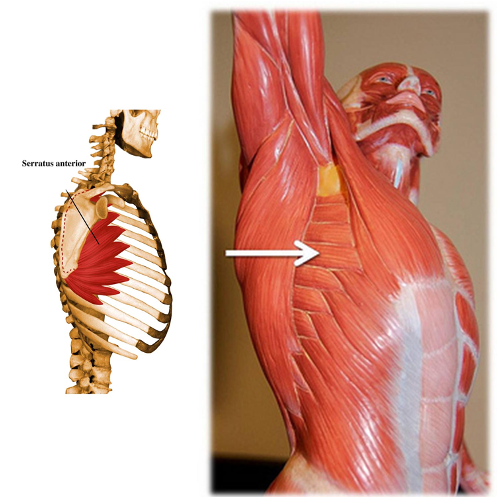Blog
08 Feb 2023
Why do my shoulder blades stick out?
By Erin Lanting, BSc, MScPT
Do you feel like, or have you been told that your shoulder blades stick out? This is called scapular winging and it’s essentially a muscular weakness that often results from poor posture and/or muscle imbalance. Today we are going to talk about what scapular winging is, why it happens and ultimately what we can do about it to bring our muscles back into balance and prevent future injury. I will post some articles and videos to our facebook page in the coming weeks on this topic, but as always, please check in with a physiotherapist if you suspect you might have this problem to see what exercises are appropriate for you.
What is scapular winging?
The scapula is the anatomical term for the shoulder blade, the flat bone that connects the arm to the collarbone. Scapular winging is when one or both shoulder blades stick out from the back rather than lying flat, either at rest or with movement of the arm. This finding is quite common & will often be most prominent on the inner and lower border of the shoulder blade closest to your spine but of course there are varying degrees of severity and dysfunction.

What causes scapular winging?
There are two overarching causes of scapular winging. If you have damage to a nerve, often the long thoracic nerve, either from surgery, trauma or injury, it can affect the muscles that control the shoulder blade position. The nerve damage will make it difficult for you to activate the muscles to keep your shoulder blade lying flat as the nerve is no longer sending signals to that muscle. For the purposes of this article, we are not focusing on this type of injury although physiotherapy will still likely be beneficial for you.
The second cause of winging is atraumatic, due to poor posture and muscular imbalance and is the focus of this article. The main muscle responsible for keeping that shoulder blade flat on the rib cage is the serratus anterior muscle and if it becomes weak you may end up with scapular winging. This muscle is located on the underside of the shoulder blade, wrapping around your sides to your ribs. The serratus anterior is responsible for scapular protraction, a motion that allows the shoulder blade to sit flat on the ribs, as well as it assists with upward rotation of the shoulder blade, a key movement for overhead activities.

Why is scapular position important?
A change in your scapular position or movement can make it difficult to move your arm, especially when performing overhead activities. It can cause your shoulder to feel weak and disrupt the alignment of your shoulder joint, ultimately putting you at risk for a shoulder or other arm injury.
Fun fact! The serratus anterior muscle is very closely linked with your abs as it ultimately wraps around your rib cage to become your external obliques. It is true when they say everything is connected!
What can I do to improve my scapular position and control?
There are some basic exercises you can do to help strengthen the serratus anterior as well as promote proper motion of your shoulder blade. I have found that many people think they need to do exercises where they squeeze their shoulder blades together, otherwise known as scapular retraction, rowing or pulling motions. Although these exercises are great, they are actually not that much help with scapular winging. Instead, you should be doing more pushing motions. For example, a pushup or modified version of a pushup can help strengthen your serratus anterior and improve overall shoulder stability. You may also find it beneficial to strengthen your obliques and shoulders at the same time since we now know the close correlation between the serratus anterior and your external oblique muscles. Stay tuned for our next blog where I will show you some of my favorite exercises to help address scapular winging.
